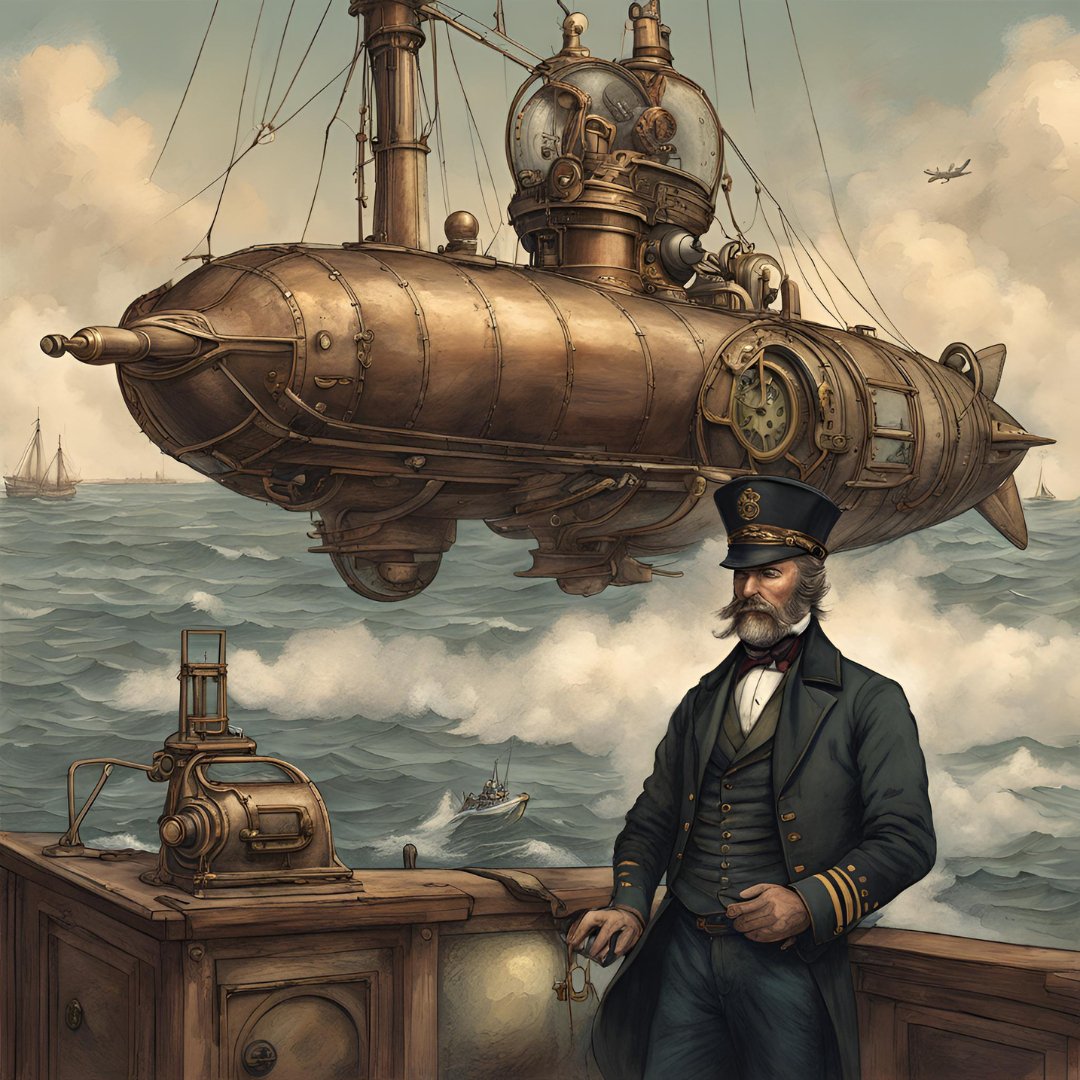"20,000 Leagues Under the Sea" is the second installment of Jules Verne's trilogy that begins with "In Search of the Castaways" and concludes with "The Mysterious Island." The 20,000 leagues referred to in the title represent the distance traveled by the Nautilus during the time spent on board by Aronnax, Conseil, and Ned, amounting to about 80,000 kilometers. It is one of the most popular precursors to science fiction, with the original edition published in 1870.
...WHAT A JOURNEY!
20,000 leagues, 80,000 kilometers. From the Pacific Ocean to Asian archipelagos, passing through the South Pole, the Suez Canal, and reaching the Norwegian lands, where the submarine Nautilus is suddenly sucked into the terrifying whirlpool of the Maelström near the coasts of Norway, on one of the Lofoten Islands, awaiting its return to France. Svalbard Islands honors and glorifies the figure of Captain Nemo and his submarine Nautilus. Symbols of independence and adventurous spirit from which we drew inspiration for our new collection. A collection that aims to exalt the spirit of our audience, dynamic, alive, and resolutely rejecting the monotony of staticity. An anthem to all adventurers, on land and at sea, whom we welcome alongside us to share a common journey, aspiring to achieve the ideals of us all. IN SEARCH OF...WHAT? The story is set in the period immediately following the American Civil War and follows the adventures of the protagonists aboard the submarine Nautilus, secretly built by its enigmatic commander, Captain Nemo. Among them, Professor Pierre Aronnax, his assistant Conseil, and the brave harpooner Ned Land, who alongside Nemo will demonstrate their navigational skills. The encounter with the captain is not the most pleasant, but it occurs during a sea battle in which they become his prisoners. From this moment on, it will emerge that the much-feared sea monster is none other than the Nautilus. Set sail aboard the Abraham Lincoln with the mission to defeat the monster sinking ships encountered along its path, they end up joining Captain Nemo's crew.
AMBIGUITIES AND DARK SIDES OF A MYSTERIOUS CAPTAIN
In "20,000 Leagues Under the Sea," the name and nationality of Nemo remain obscure, with only a strong desire for revenge against an imperialist nation that destroyed his homeland and family being apparent. He also appears as a supporter of exploited peoples, an adversary of colonialism. In the sequel, "The Mysterious Island," Nemo presents himself as Prince Dakkar, son of an Indian rajah, with a deep-seated hatred, inherited from his father, for the British conquest of India. Verne did not correct the first part of the novel, already published, so it remains difficult to identify Nemo as an Indian prince fighting primarily out of patriotism rather than mere vengeance. Despite the ambiguities regarding Captain Nemo's background, due to misunderstandings with the publisher (Pierre-Jules Hetzel feared censorship of the book in the Russian market and offending a powerful French ally, so he obscured Nemo's past and motivations), what remains unchanged throughout the trilogy is the character of a brilliant yet dark and mysterious man. He is depicted as having renounced the society of men and cut all ties with the land, but still providing support to independence movements fighting for their people's freedom. Nemo remains an enigmatic figure, inspiring many sailor novels that would be published in the following century. His figure and that of his Nautilus have passed into the collective imagination as symbols of great adventures at sea.








